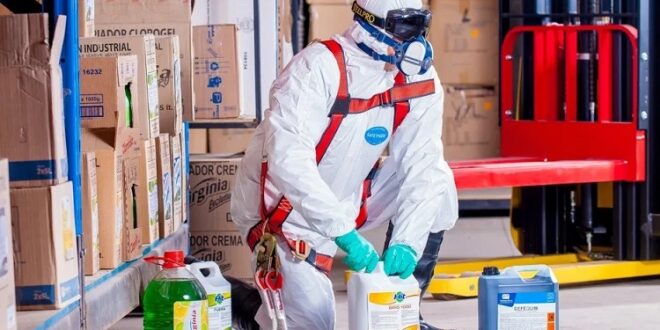In every business that handles any kind of hazardous chemicals, you’ve most likely seen a gigantic red or yellow binder hanging in plain sight. These enormous binders are typically found in high-traffic areas, and are easy to access if you need the information within them. These books contain MSDS, meaning they are critical to ensuring the safety of workers and clientele alike.
What are MSDS, and what is their purpose? Let’s dive deep into the details.
MSDS Meaning
First, let’s discuss the MSDS meaning. MSDS is an abbreviation that stands for Material Safety Data Sheets. You may also see these items referred to as SDS or simply “safety data sheets”.
As the name would suggest, SDS sheets contain information relevant to using a hazardous chemical safely. We’ll discuss the specific information you’ll find on a safety data sheet in further detail below.
MSDS Purpose
Now that you understand the meaning of an MSDS, you may wonder what its purpose is. The purpose of an MSDS is to provide a complete profile of the potential hazards that a chemical could provide to the workers who deal with it. This is why they’re required by OSHA.
These sheets make it easy for workers and emergency personnel to identify the chemicals involved in a safety incident and figure out how to respond appropriately. If you’re not sure whether your workplace needs MSDS sheets handy, feel free to construct a job safety analysis worksheet to figure out your specific level of risk.
What Information Does an SDS Contain?
A safety data sheet is broken down into sixteen different sections, all written in English. These sections must follow a specific format, or else the MSDS will not be OSHA-compliant. To somewhat oversimplify, the sections proceed as follows:
Sections 1-4
Sections one through four contain the most relevant information on a safety data sheet. Section one identifies the chemical in question, its supplier, and its common uses. Section two identifies the hazards of the chemical substance and classifies it. Section three identifies the composition of the chemical mixture. Section four describes the first aid measures that should be taken in the event of exposure.
Sections 5-8
Sections five through eight cover storage and emergency procedures. Section five discusses what you should do if a fire breaks out with this chemical. Section six goes over what to do if an accidental release occurs. Sections seven and eight go over how to store the chemical and prevent accidental exposure.
Sections 9-12
Sections nine through twelve are most relevant in lab settings. They review the physical, chemical, toxicological, and ecological features of the chemicals.
Sections 13-16
Lastly, sections thirteen through sixteen review how to transport and dispose of the chemical. They also give an overall safety assessment of the substance and any remaining regulatory information that users should know.
Looking for More Workplace Safety Information?
Now that you understand the MSDS meaning, do you need more workplace safety information? If so, feel free to check out the business section of our blog for more articles like this one!
 HammBurg Be informed with latest news, reviews, entertainment, lifestyle tips, and much more.
HammBurg Be informed with latest news, reviews, entertainment, lifestyle tips, and much more.




